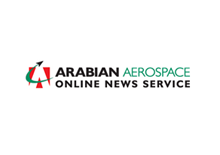Future of the Saudi Arabian Defense Industry, 2019 - Market Attractiveness, Competitive Landscape and Forecasts to 2024 - ResearchAndMarkets.com
The "Future of the Saudi Arabian Defense Industry - Market Attractiveness, Competitive Landscape and Forecasts to 2024" report has been added to ResearchAndMarkets.com's offering.
This report provides readers with detailed analysis of both historic and forecast defense industry values, factors influencing demand, the challenges faced by industry participants, analysis of industry leading companies, and key news.
Regional disturbances such as the interstate power projection strategies of Iran, coupled with the growing threat from terrorist organizations across the region is compelling Saudi Arabia to become one of the largest defense spenders in the world. In 2015, the country briefly managed to displace Russia and emerge as the third largest defense spender, behind only the US and China. The volatility in oil prices forces the government to carefully balance expenditures within anticipated revenues and keep the deficit at a sustainable level.
Saudi Arabia has the one of the largest defense budgets globally which is expected to grow at a forecast CAGR of 6.45%. The 2019 budget aims to allocate sufficient funds to strategic infrastructure projects, as well as maintain infrastructure and continue to push for economic diversification by enhancing the participation of the private sector. The main factors driving defense expenditure in Saudi Arabia are the ongoing arms race among Middle Eastern nations due to growing turbulence in countries such as Syria, Iraq, and Yemen, combined with the perceived threat from Iran.
Saudi Arabian homeland security expenditure is expected to reach US$38.1 billion in 2024. Homeland security is an area that has gained prominence in Saudi Arabia over the last decade, with expenditure expected to increase from US$30.1 billion in 2020 to US$38.1 billion in 2024 at a CAGR of 6.03%. After the Arab Spring revolution in the Middle Eastern and the North African (MENA) region, and minor protests in Riyadh, the country is expected to increase expenditure to enhance security measures. The spread of the extremist group, IS, in neighboring Syria coupled with the Houthi rebellion in adjoining Yemen, has forced Saudi Arabia to invest in securing its borders.
Saud Arabia is the fifth largest global importer of military hardware. Although, the country plans to develop its local defense sector through SAMI under Vision 2030, it is anticipated that the production will be limited to small arms, maintenance, and support services. The US was the leading supplier of arms to Saudi Arabia, occupying a share of 68% with major contracts including the modernization of the Saudi M1A2 Tank fleet and E-3 AWACS, and the supply of UH-60 helicopters. In May 2017, Saudi Arabia's King Abdulaziz City for Science and Technology (KACST) unveiled its Saqr 1 unmanned aerial vehicle, which has a range of 2,500km and features a satellite communication system. The country's capital expenditure increased from US$8.6 billion in 2015 to US$14.5 billion in 2019, a CAGR of 13.77%, attributed primarily to the drastic erosion in global oil & gas prices worldwide.
Select Findings
- Saudi Arabia is one of the largest defense spenders in the world, behind the US, China, and Russia, with a military budget valued at US$50.9 billion in 2019. The country is the largest market in the Middle East due to its robust economic and financial position, backed by its oil exports. The rising tension with Iran, aggressive procurement strategies, and modernization programs, along with the need to strengthen its indigenous defense industry, are the main factors boosting the country's military expenditure.
- On a cumulative basis, the country is expected to invest US$300.2 billion for defense purposes, of which US$90.8 billion is earmarked for capital expenditure to fund defense procurements. The government's well-defined military modernization plans along with its efforts to supress Houthi insurgency in Yemen as well as its support for rebel factions within Syria, are expected to stimulate the expenditure over the next few years
- The MoD is expected to invest in physical security of vital assets, development of land based C4ISR cpaabilities and multi-role aircraft among others.
Companies Mentioned
- BAE Systems PLC
- Airbus Group
- General Dynamics Corporation
- Lockheed Martin
- Science Applications International Corporation (SAIC)
- Sikorsky Aircraft Corporation
- Thales S.A.
- Boeing
- Northrop Grumman Corporation
- Advanced Electronics Company (AEC)
- Al Salam Aircraft Company
Topics Covered
1. Introduction
2. Market Attractiveness and Emerging Opportunities
2.1. Current Market Scenario
2.1.1. Primary Threat Perception
2.1.2. Military Doctrine & Strategy
2.1.3. Equipment Acquisition
2.1.4. Procurement Programs
2.1.5. Ongoing procurement programs
2.1.6. Future procurement programs
2.1.7. Top Procurement Programs by Value (US$ Million) 2019-2024
2.1.8. Social, Political, and Economic Environment & Support for Defense Projects
2.2. Defense Market Size Historical and Forecast
2.2.1. Saudi Arabian defense budget to grow at an estimated CAGR of 6.45% during 2020-2024
2.2.2. Saudi Arabian defense expenditure as a percentage of GDP is expected to average 6.9% during the forecast period
2.3. Analysis of Defense Budget Allocation
2.3.1. Capital expenditure share to increase over the next five years
2.3.2. Capital expenditure is forecasted to record a CAGR of 8.5% during the forecast period
2.3.3. Per capita defense expenditure is expected to increase over the forecast period
2.4. Homeland Security Market Size and Forecast
2.4.1. The homeland security market in Saudi Arabia is expected to grow at a CAGR of 6.03% during the forecast period
2.4.2. Border Security and Infrastructure, along with cyber security will be the key factors driving homeland security expenditure
2.5. Benchmarking with Key Global Markets
2.5.1. Saudi Arabia is the third largest defense spender
2.5.2. Saudi Arabia's military expenditure remains among the top five defense spending countries in the world
2.5.3. Saudi Arabia spent 6.4% of its GDP on defense in 2019
2.6. Market Opportunities: Key Trends and Drivers
2.6.1. Top 10 Defense Market Sectors by Value (US$ Million) - Projections over period 2019-2024
2.6.2. Critical Infrastructure Protection (CIP) - Physical Security
2.6.3. Land Based C4ISR
2.6.4. Fighters & Multi-Role Aircraft
3. Defense Procurement Market Dynamics
3.1. Import Market Dynamics
3.1.1. Defense industry heavily reliant on imports from foreign countries
3.1.2. The UK and the US are the key defense suppliers to Saudi Arabia
3.1.3. Aircraft to dominate Saudi Arabian defense imports
3.2. Export Market Dynamics
3.2.1. Saudi Arabia's defense export market is negligible
4. Industry Dynamics
4.1. Five Forces Analysis
4.2. Bargaining power of supplier: Low to Medium
4.3. Bargaining power of buyer: Medium
4.4. Barrier to entry: Medium
4.5. Intensity of rivalry: Medium to High
4.6. Threat of substitution: High
5. Market Entry Strategy
5.1. Market Regulation
5.2. Defense industry remains closed to FDI
5.3. Offset Program to aid defense industry and economy
5.4. Market Entry Route
5.4.1. Budgeting Process
5.4.2. Procurement Policy and Process
5.4.3. A large number of foreign corporations enter the defense market by winning contracts
5.4.4. Collaborations and cooperative agreements provide market entry opportunities
5.4.5. GCC - an entry route to Saudi Arabian military market
5.5. Key Challenges
5.5.1. Exploitation of power through bribery, corruption, and political affiliations
5.5.2. Lack of skilled labor
5.5.3. The UK and the US dominate the market, posing challenges to other foreign firms
6. Competitive Landscape and Strategic Insights
6.1. Competitive Landscape Overview
6.1.1. Saudi Arabian defense sector is dominated by foreign competitors
6.1.2. Saudi Arabia Market Share Analysis, 2019-2024
6.1.3. Domestic participation in the Saudi Arabian defense industry is limited to two companies
6.2. Key Foreign Companies
7. Business Environment and Country Risk
7.1. Economic Performance
7.1.1. GDP per Capita
7.1.2. Gross Domestic Product
7.1.3. Exports of goods and services LCU Bn
7.1.4. Imports of goods and services, LCU Bn
7.1.5. Gross National Disposable Income
7.1.6. Market Capitalization of listed companies (US$ Billion)
7.1.7. Market Capitalization of listed companies (as a % of GDP)
7.1.8. Goods Exports as a % of GDP
7.1.9. Goods Imports as a % of GDP
7.1.10. Services Imports as a % of GDP
7.1.11. Services Exports as a % of GDP
7.1.12. Net Foreign Direct Investment (current US$ Bn)
7.1.13. Net FDI as a % of GDP
7.1.14. Mining, Manufacturing, Utilities Output (LCU Bn)
For more information about this report visit https://www.researchandmarkets.com/research/vhxmnk/future_of_the?w=4
View source version on businesswire.com: https://www.businesswire.com/news/home/20190321005479/en/






